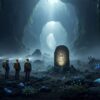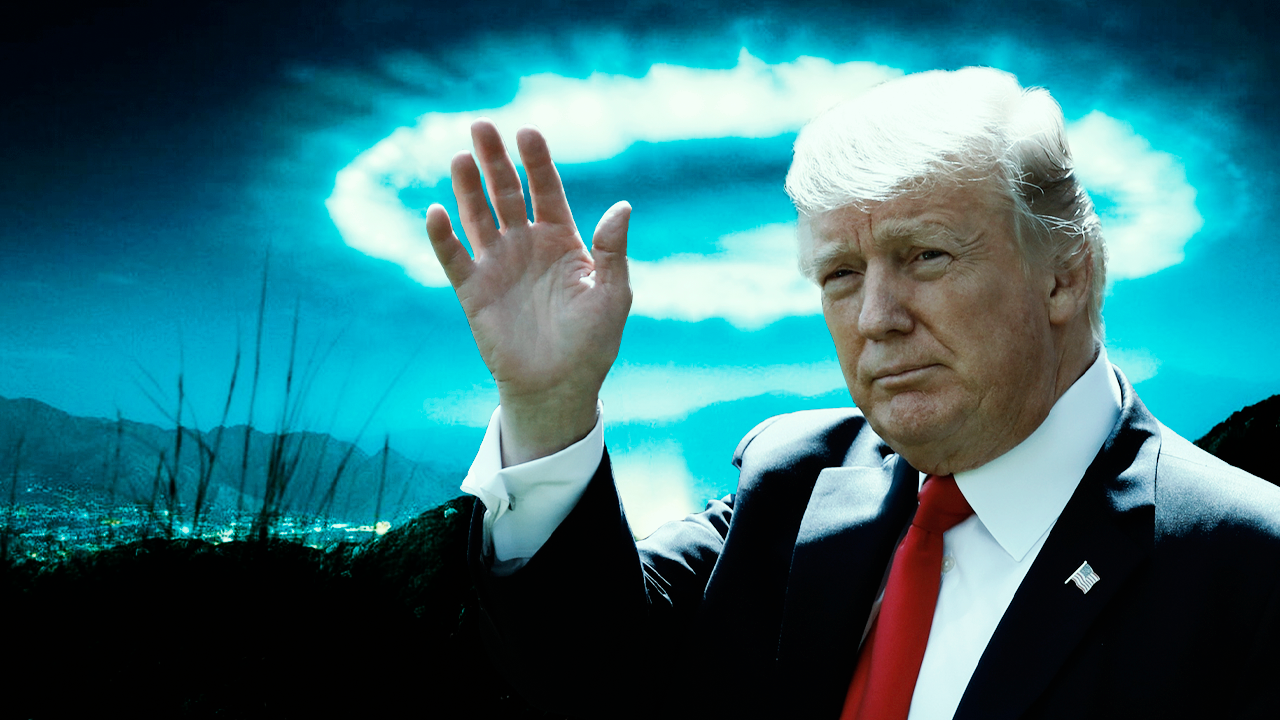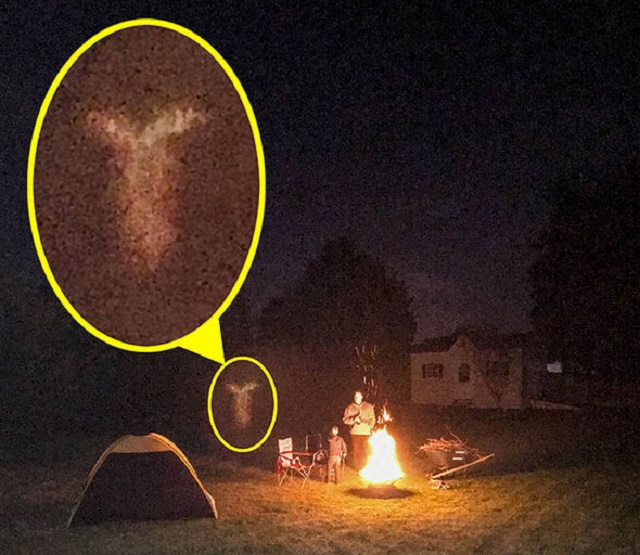The whispers of ancient texts and sacred scriptures echo through time, speaking of mysterious beings—the Nephilim. Were they merely mythical figures, or do these pervasive references hint at a profound, yet forgotten, chapter in humanity’s history? To seek answers, we must delve into the very sources that have preserved these enigmatic accounts for millennia.
For those willing to look beyond conventional narratives, a fascinating mosaic of historical, mythological, and religious threads begins to unravel, pointing towards a reality far different from what we might have been taught. After all, the true archives of the past lie within these ancient manuscripts, offering invaluable insights to those who approach them with an open mind and a spirit of inquiry.
The Dawn of the Nephilim: A Controversial Union
Ancient accounts, spanning across diverse cultures and belief systems, offer a consistent, albeit startling, narrative regarding the genesis of the Nephilim.
Around 40,000 B.C., according to some interpretations, a momentous event transpired. A faction of the Elohim—often understood as incarnate angelic beings—influenced by Samael (the Devil), are said to have united with human women. The fruit of these unions were the Nephilim.

This initial, pivotal interaction is often placed in what was then the largest human city, far from the primitive cave dwellings many might imagine. This bustling metropolis, known as Arantis, meaning “city of the plain,” is geographically situated east of modern-day Mount Olympus, stretching from present-day Katerini to Thessaloniki, at a time when the Thermaic Gulf did not exist in its current form.
The Nature and Demise of the Nephilim: Giants and Terrors
Across a multitude of ancient texts—from various peoples and religions—the Nephilim are consistently portrayed as immortal and incredibly powerful beings. Their formidable nature, however, held a singular vulnerability: copper, a potent poison for them.
These Nephilim, with their immense strength and insatiable appetites, are depicted as a devastating scourge upon humanity. Initially, they consumed the fruits of human labor, but their depredations escalated to devouring humans themselves, viewing them as both a slave race and a food source.
Humanity’s salvation, according to some narratives, arrived through the intervention of a “blue-blooded Zeus.” This figure is credited with creating the lineage of the ELs, described as philanthropists. Establishing their base on Olympus, they are said to have confined the Nephilim to the Tartarus, a bronze, hollow interior of the Earth, crafted by the Elohim, El Sendai.

The Old Testament, while not explicitly naming “Nephilim” as a specific race in all contexts, frequently uses terms like “Titan” and “giant.” These are often understood as adjectives denoting great power and size, rather than proper nouns for a distinct people. However, the underlying implication for many ancient literature enthusiasts is that these formidable beings, these “Titans” and “Giants,” are indeed the very Nephilim, believed by some to reside within the hollow Earth to this day. This interconnectedness, though seemingly “fleeting” in its historical narrative, possesses a logical structure and coherence when viewed through the lens of various ancient accounts.
Saint Andrew of Christ Salos and the Unclean Nations
The intriguing narrative of subterranean entities and their eventual emergence is further amplified by prophetic texts. Saint Andrew of Christ Salos’s 6th-century prophecy, “On the End of the World,” offers a chilling glimpse into a future where these “unclean nations” are unleashed.
He prophesies: “For in that time the Lord God will block the gates that are in Idalia, so that Alexander the King of the Macedonians will shut up, and the seventy-two kings will go out with their people, the so-called unclean nations, which are most abominable of all confusion and depravity, and will be scattered in the countries that are under heaven, feeling the flesh of living men, and drinking the blood. dogs and mussels and frogs and all dirt.”
This passage paints a dire picture of widespread desolation, with these entities consuming the very earth and desecrating sacred spaces. The darkening of the sun and moon are depicted as direct consequences of their abhorrent actions. The prophecy also mentions the rise of Satan, the Antichrist, from the tribe of Dan, who will serve as a vessel for fulfilling ancient prophecies.

Crucially, the prophecy’s opening reference to “gates” resonates with another 15th-century manuscript, whose author remains unknown, detailing Alexander the Great’s encounters with these “unclean nations.”
Alexander the Great and the Caspian Gates: Imprisoning the Unclean
The ancient texts vividly describe Alexander’s role in containing these malevolent forces. According to a 15th-century manuscript, after defeating Darius the Midian, Alexander journeyed to the sea of the land called Helios. There, he encountered “unclean nations… of the sons of Japheth,” characterized by their consumption of “unclean food,” including “flesh of the dead, abortions, embryos… and all kinds of unclean beasts.” The deceased, it notes, were not even buried.
Recognizing the potential for these beings to corrupt and worsen the earth, Alexander is said to have prayed to the Lord. He then gathered all people and, after intercessions, pursued these “unclean nations” to the northern passages, where there was no entrance from east to west. Divine intervention followed, with “the Lord God command[ing] two mountains… to come near one another to the third degree,” effectively sealing them in. He then built “gates of brass” covered with “incomparable glass,” designed to be impenetrable by iron or any other means, thus containing these “misguided and false nations of all magical malfeasances.”

This account further aligns with references to Gog and Magog in the Revelation, suggesting an eventual release in the “last days.” Five manuscripts associate the seventy-two kings with these notorious entities, providing a list of encapsulated languages and nations that Alexander supposedly enclosed within the Caspian gates.
Medieval Travelogues: Sir John Mandeville and Marco Polo
The narrative of strange, confined peoples persists through medieval travelogues, adding layers to the Nephilim lore.
Sir John Mandeville’s ‘Voiage de Sir John Maundevile’ (1357) speaks of an island called Nakoumera, inhabited by people with “hounds’ heads”—dog-headed individuals who are “reasonable and understanding.” Intriguingly, they worship an ox as their god, a detail that serves as a connecting link to other historical accounts. They are described as formidable fighters who, if they capture an enemy in battle, will eat them.
This detail of ox-worship finds a parallel in the writings of Emperor Frederick II concerning Henry III of England. Frederick notes of the Tartars: “He told them that they were descended from the Ten Tribes who forsaked the law of Moses, and worshipped the golden calf. These are the people whom Alexander the Great locked up in the Caspian Mountains.” This direct connection reinforces the idea that these confined nations are linked to ancient, idolatrous groups.
Marco Polo’s “Book of Miracles” also contributes to this intriguing tapestry. He describes a land in Georgia ruled by King David Melic, whose kings were born with an eagle-like mark over their right shoulder. The people are depicted as skilled archers and brave soldiers, Christians of the Greek rite. Polo states that this is the country beyond which Alexander could not pass, due to a narrow and dangerous strait with the sea on one side and impassable mountains on the other. Alexander, he notes, built a strong tower there, aptly named the “Iron Gate,” to prevent passage, thus corroborating the notion of Alexander’s confinement efforts.
Mandeville further elaborates in “The Travels of Sir John Mandeville,” Chapter XXIX, on the “22 Kings who were locked up in the Mountains.” He recounts how Alexander, unable to entirely enclose them, prayed to God, who miraculously closed the mountains together, trapping them on all sides except for one, which bordered the Caspian Sea. A persistent belief, as Mandeville notes, is that “they will come out in the years of the antichrist, and that they will make a great slaughter of the Christians.” This passage also mentions the Jewish people’s continued learning of Hebrew in anticipation of these other Jews emerging from the Caspian, intending to destroy Christian populations.
The Hollow Earth Hypothesis: Philosophical and Mythological Underpinnings
The concept of a subterranean world, a “hollow Earth,” is not merely a modern-day fringe theory but finds its roots deep within ancient philosophical and mythological frameworks, directly influencing the narrative surrounding the Nephilim.
Plato’s Phaedon: A Subterranean Realm
Plato’s “Phaedon” (110b–115a) offers a detailed and fascinating description of the Earth’s interior. He postulates numerous “places in the earth in all its circumference, and in its hollows,” some deeper, others less so, all interconnected by “openings that are sometimes narrower and sometimes wider.” Through these subterranean networks, “much water flows from one to another… and so great and endless rivers with warm and cold waters are formed from the earth; and much fire, and thus great rivers of fire are formed.”
Plato refers to the greatest of these gaps as Tartarus, echoing Homer’s description of a “very deep chasm” under the Earth. Into this abyss, all rivers are said to flow, only to emerge again, their characteristics shaped by the underground terrain. The continuous ebb and flow of liquids, coupled with the movement of air, are described as creating “strong and violent winds with its entry and exit,” suggesting a dynamic, living subterranean system.

Hesiod’s Theogony: Chaos, Gaia, and the Imprisonment of Titans
Hesiod’s “Theogony” further solidifies the ancient understanding of a profound underworld. He begins with the birth of Chaos, followed by Gaia (Earth), and the “dark Tartarus in the depths of the earth with its wide roads.”
His epic account of the Titanomachy, the war between the Titans and the Olympian gods led by Zeus, directly speaks to the theme of powerful beings confined beneath the Earth. Zeus, after bringing forth the fearsome, hundred-handed (or fifty-headed) beings like Kottos, Vriareos, and Gyis from subterranean Erebus, describes them as possessing “invincible power.”
During the fierce battle, the very roots of Mount Olympus shook, and a “heavy earthquake reached as far as the foggy Tartarus”—an evocative description suggesting a dim and oppressive atmosphere within the hollow Earth. The hundred-handed ones, “insatiable for war,” hurled “three hundred rocks, one after the other,” overwhelming the Titans. Upon their defeat, the Titans were cast into the “darkened Tartarus,” bound by “bitter bonds.”
Hesiod emphasizes the immense depth of this prison: “Nine nights and nine days, the bronze anvil, falling from heaven, reaches the earth in the tenth. And nine more nights and nine days the bronze anvil falling from the earth on the tenth will reach Tartarus.” This vivid imagery conveys an almost unfathomable distance to this subterranean realm. He states that a “bronze barrier surrounds him and around his neck the night pours out with three rows of darkness,” making escape impossible. Neptune, according to Hesiod, placed “bronze gates and a wall surrounds it from everywhere,” further securing their confinement.

Within this gloomy abyss, Night and Day meet, forever in a cyclical exchange, but never present together. Here, Hesiod places the abode of Sleep and Death, “fearsome gods to whom the bright Sun never casts its rays,” further emphasizing the profound darkness and isolation of this underworld. The presence of Sleep, “calm and sweet,” contrasts sharply with Death, possessing “a heart of iron and a soul of bronze and merciless in his breasts,” a relentless force even to the immortal gods. This profound mythological framework provides a rich context for understanding the ancient belief in powerful entities confined within the Earth.
Socrates and the “Things Under the Earth”: A Philosophical Persecution
The historical persecution of Socrates, the renowned Greek philosopher, takes on an even more intriguing dimension when examining the precise charges levied against him. Accused by Anytus, Meletus, and Lycon, the core indictment against Socrates, as recorded by Plato, was:
“Socrates does justice and wonders, asking for the things under the earth and the heavenly things, and for the sake of those who and others who teach the same things.” Or, more directly: “Socrates is guilty of a crime, because he is concerned with useless and unnecessary things, in investigating the phenomena that occur under the earth and in heaven, and because he makes unjust words seem just, and teaches them to others.” (Plato, Apology of Socrates 19b 4).
This accusation is striking. It suggests that Socrates’ inquiries into “things under the earth” were not merely abstract philosophical musings but perhaps a direct challenge to established beliefs or an unwelcome exploration of sensitive, even forbidden, knowledge. For many, this charge hints that powerful societal forces, perhaps the “black brotherhood” mentioned in the original text, sought to silence Socrates because his investigations threatened to reveal uncomfortable truths that could influence the populace. The subsequent, albeit posthumous, acquittal of Socrates almost 2,500 years later at the Onassis Cultural Centre highlights the historical injustice, yet the persistent notion is that if he were alive today, similar powerful interests might still seek to silence him.
Sibylline Prophecies and the Underworld: A Divine Perspective
The Sibylline Oracles, ancient collections of prophecies, also lend their voice to the concept of an underworld and its inhabitants.
An excerpt from “Sibyl Logos A,” from the book Die Oracula Sibyllina, speaks of the creation of the world by God: “BUT THOU, THOU DIVERS MORTALS, THOU HAST SLAIN THE NUNNEHEUS, THAT THOU MAYEST NEGLECT ME, THE MOST HIGH KING, WHO CREATED ALL THE WORLD, THOU HAST SAID TO BECOME, AND TO BECOME.”
It then states: “FOR HE ACTED UPON THE EARTH, THE TARTARUS OF DOUBTS, AND HE GAVE HIM SWEET LIGHT, HE LIFTED UP THE HEAVENS, AND HE MADE THE SEA OPEN, AND CROWNED THE POLE WITH THE SHINING STARS, AND ADORNED THE EARTH WITH PLANTS, AND THE RIVER OF THE SEA, AND POURED OUT AND MIXED THEM WITH AIR, AND THE CLOUDS THAT WERE COOL.”
Significantly, the text reiterates: “FOR HE ACTED ON THE EARTH, TARTARO OF DOUBTS,” underscoring the divine establishment of this subterranean realm, a place often associated with confinement and the unknown. This prophetic voice, thus, further solidifies the ancient understanding of a deep, divinely ordained underworld.
Gregory of Thessaloniki and the Earth’s Zones: An Early Cartography of the Unknown
Saint Gregory of Thessaloniki, in his “Chapters of Natural Theology,” offers an intriguing perspective on the Earth’s habitability and its hidden regions. He notes:
“Two zones of the earth are respectively temperate and habitable, according to the sages of the Greeks. Each one is divided into two others and thus becomes four. That is why they claim that there are four races of people on earth, who cannot communicate with each other.”
He continues to explain these divisions: “For, according to these sages, there are people who inhabit the unrestrained zone on the sides, who are separated from us by the scorched zone of the earth. Opposite them, in their opinion, live those who live under this zone. In a similar way there are those who dwell below us. The former are called ‘objects’ towards us, while the others are called ‘antipodes’ and ‘inverted’.”
Gregory attributes this understanding to the prevailing ignorance that “except for a tenth of the earth’s sphere, almost all the rest is covered by the waters of the abyss.” This early geographical and anthropological contemplation, though perhaps misinterpreting the full scope of Earth’s composition, nevertheless acknowledges the ancient belief in distinct, isolated populations, including those “under” or “below” the known world.
Pytheas the Massaliot: The Navigator of the “Kronion” and Hyperborea
The intrepid ancient Greek navigator and explorer, Pytheas the Massaliot, stands as a pivotal figure in the lore of the “hollow Earth” and the far north. Hailed as the first to reach the mythical “Thule” and the North Pole, Pytheas’s accounts, primarily from his lost works “On the Ocean” and “Pytheus Periplus,” inspired theories about the “Kronion,” the subterranean sea of the north.
Thule itself, often interpreted as the “Divine land” from “Thou” (God) and “li” (stone), or perhaps linked to “dome” or “blur” (dark), presented an enigma. Pytheas’s journey to the “Evergreen Sea” at 82 degrees north marked the known limits of life, where “Saturn rules.” The treacherous conditions, with “floating small ices,” forced his ships to sail closely.
However, a truly anomalous event occurred as they navigated these frigid waters. The bitter cold gave way to a sudden, inexplicable warm air. The dense fog dissipated, revealing a clear atmosphere and a sea that regained its familiar Mediterranean hue. Then, “as if by magic,” the fog lifted, unveiling a wondrous, verdant land—green meadows bathed in a unique sunlight, inhabited by large, unfamiliar grazing animals, and in the distance, a strange city with never-before-seen architecture. Pytheas, certain he had found Hyperborea, ordered his ships towards this fantastical land. As they approached, a dense fog descended behind them, while ahead, everything grew brighter.

Yet, they never reached this elusive port. Pytheas, upon his return to the Mediterranean, chose to remain silent about this particular leg of his journey. What “incredible and terrible things” did he witness in that “strange unknown country” that compelled him to keep it a secret? Was it a genuine encounter, or a hallucination brought on by extreme conditions? The lingering question remains: Did Pytheas and his ship inadvertently travel “quite a bit inside the Earth”? His profound silence about this experience has fueled centuries of speculation, making him an enduring figure in the narratives of hidden realms.
Biblical References: Moses, John, and the Subterranean Dwellers
The concept of beings “under the earth” is not exclusive to ancient Greek philosophy and mythology; it finds compelling resonance within the Holy Scriptures, particularly in the Old Testament and the Book of Revelation.
Moses and the Ten Commandments: A Crucial Omission
The Ten Commandments, or the “Decalogue,” are the foundational moral laws given to Moses. The second commandment, often cited, holds a profound, yet frequently overlooked, detail:
“Thou shalt not make thyself an idol, nor any likeness, whatsoever in heaven above, and whatsoever in the earth beneath, and whatsoever in the waters under the earth. Thou shalt not worship them, nor worship them; For I am the LORD your God, a God who zealous, who pays the sin of fathers upon children, even to the third and fourth generation, to those who hate me, and who have mercy on thousands, who love me, and keep my commandments.”
Many interpreters, whether intentionally or inadvertently, often omit or downplay the phrase “and whatsoever in the waters under the earth.” The explicit inclusion of this phrase raises a critical question: What creatures or entities exist “under the earth” that the divine commandment specifically warns against worshipping? This omission, for some, suggests a deliberate effort to suppress or disregard the possibility of such subterranean life forms, including those that might be the Nephilim.
Revelation of John: Life Beneath the Surface and the Exodus of the Nephilim
The Book of Revelation, with its prophetic visions of the end times, offers powerful, vivid descriptions that many interpret as direct references to subterranean life and the eventual emergence of entities akin to the Nephilim.
Revelation Chapter 5:3 describes a pivotal moment in the heavenly court: “AND NO ONE IN HEAVEN, NOR ON EARTH, NOR UNDER THE EARTH, COULD OPEN THE BOOK, NOR SEE IT.” This statement explicitly acknowledges the existence of beings “under the earth” as distinct from those in heaven or on the surface.
Further, Revelation Chapter 5:13 paints a grand scene of universal worship: “AND ALL CREATION THAT IS IN HEAVEN AND ON EARTH AND UNDER THE EARTH, AND ALL THAT IS IN THE SEA, AND ALL THAT IS IN THEM, I HAVE HEARD THAT THEY SAID TO HIM THAT SITS ON THE THRONE AND TO THE LAMB, LET IT BE THE BLESSING AND THE HONOR AND THE GLORY AND THE KINGDOM FOR EVER AND EVER.” This verse, again, directly includes “creation… under the earth” in the chorus of praise, reaffirming their existence as distinct, sentient entities within God’s creation.

Perhaps the most compelling passages for the “exodus of the Nephilim” theory are found in Revelation Chapter 9, describing the events following the sounding of the Fifth Trumpet:
- Revelation Chapter 9:1: “AND THE FIFTH ANGEL SOUNDED THE TRUMPET, AND I SAW THAT A STAR FELL TO EARTH FROM HEAVEN, AND THE KEY OF THE WELL OF THE ABYSS WAS GIVEN TO HIM.” This “Well of the Abyss” is frequently interpreted as a literal opening to a subterranean realm.
- Revelation Chapter 9:2: “AND THE WELL OF THE ABYSS WAS OPENED, AND SMOKE ROSE OUT OF THE WELL LIKE THE SMOKE OF A FURNACE OF THE GREAT, AND THE SUN AND THE AIR WERE DARKENED OUT OF THE SMOKE OF THE WELL.” The opening of this abyss releases a dense, obscuring smoke, affecting the atmosphere above.
- Revelation Chapter 9:3: “AND OUT OF THE SMOKE LOCUSTS CAME OUT OF THE EARTH, AND AUTHORITY WAS GIVEN TO THEM, AS THE SCORPIONS OF THE EARTH HAVE AUTHORITY.” These “locusts” are not ordinary insects but are granted power akin to scorpions.
- Revelation Chapter 9:4: “AND IT WAS SAID UNTO THEM THAT THEY SHOULD NOT HARM THE GRASS OF THE EARTH, NOR ANY GREEN, NOR ANY TREE, BUT MEN ALONE, WHO DO NOT HAVE THE SEAL OF GOD ON THEIR FOREHEADS.” Their destructive power is specifically directed towards humanity, not the natural world.
- Revelation Chapter 9:5: “AND IT WAS GIVEN TO THEM NOT TO KILL THEM, BUT TO BE TORMENTED FOR FIVE MONTHS, AND THEIR TORMENT WAS LIKE THE TORMENT OF A SCORPION WHEN IT STRUCK A MAN.” Their purpose is torment, not immediate death.
- Revelation Chapter 9:6: “AND IN THOSE DAYS MEN WILL SEEK DEATH, AND WILL NOT FIND HIM, AND WILL DESIRE TO DIE, AND DEATH WILL FLEE FROM THEM.” The agony inflicted by these entities is so severe that people will long for death as a release.
- Revelation Chapter 9:7: “AND THE FORMS OF LOCUSTS WERE LIKE HORSES PREPARED FOR WAR, AND ON THEIR HEADS THEY WERE LIKE CROWNS LIKE GOLD, AND THEIR FACES WERE LIKE THE FACES OF MEN.” Their appearance is a chilling hybrid, combining animalistic strength with human-like features.
- Revelation Chapter 9:8: “AND THEY HAD HAIR AS WOMEN’S HAIR, AND THEIR TEETH WERE LIKE LIONS’.” Further grotesque details emphasize their monstrous nature.
- Revelation Chapter 9:9: “AND THEY HAD BREASTPLATES AS BREASTPLATES OF IRON, AND THE VOICE OF THEIR WINGS WAS LIKE THE VOICE OF THE CHARIOTS OF MANY HORSEMEN RUNNING TO WAR.” Their armored appearance and the sound of their movement evoke a powerful, overwhelming force.
- Revelation Chapter 9:10: “AND THEY HAD A TAIL LIKE SCORPIONS, AND THEY WERE CENTERS IN THEIR TAILS, AND THEIR POWER WAS TO HURT MEN FOR FIVE MONTHS.” The scorpion-like tails, armed with stingers, reiterate their capacity for inflicting agonizing pain.
Many interpret these “locusts” not as literal insects, but as symbolic representations of the Nephilim or similar “polluting genera” emerging from the earth’s depths, unleashed upon humanity during a time of great tribulation. Their described characteristics—human-like faces, long hair, lion’s teeth, iron breastplates, and scorpion tails—align with the monstrous, hybrid descriptions often associated with the Nephilim in other ancient texts.
The Enduring Mystery
The compiled evidence from diverse ancient sources—ranging from Greek philosophy and mythology to medieval travelogues and sacred scriptures—presents a compelling, if unsettling, case for the existence of subterranean realms and the “polluting genera” believed to inhabit them. The consistent portrayal of powerful, often malevolent, beings confined beneath the Earth, and the prophecies of their eventual resurgence, are not isolated threads but form a deeply interwoven narrative that has resonated across millennia.
Whether one interprets these accounts literally, metaphorically, or as ancient attempts to describe real phenomena, the pervasive nature of the Nephilim lore demands attention. The question is not just what these beings were, but what these enduring narratives tell us about humanity’s understanding of its world, its past, and its potential future. The hidden depths of our planet, and the secrets they may hold, continue to captivate and challenge our perceptions of reality.

















